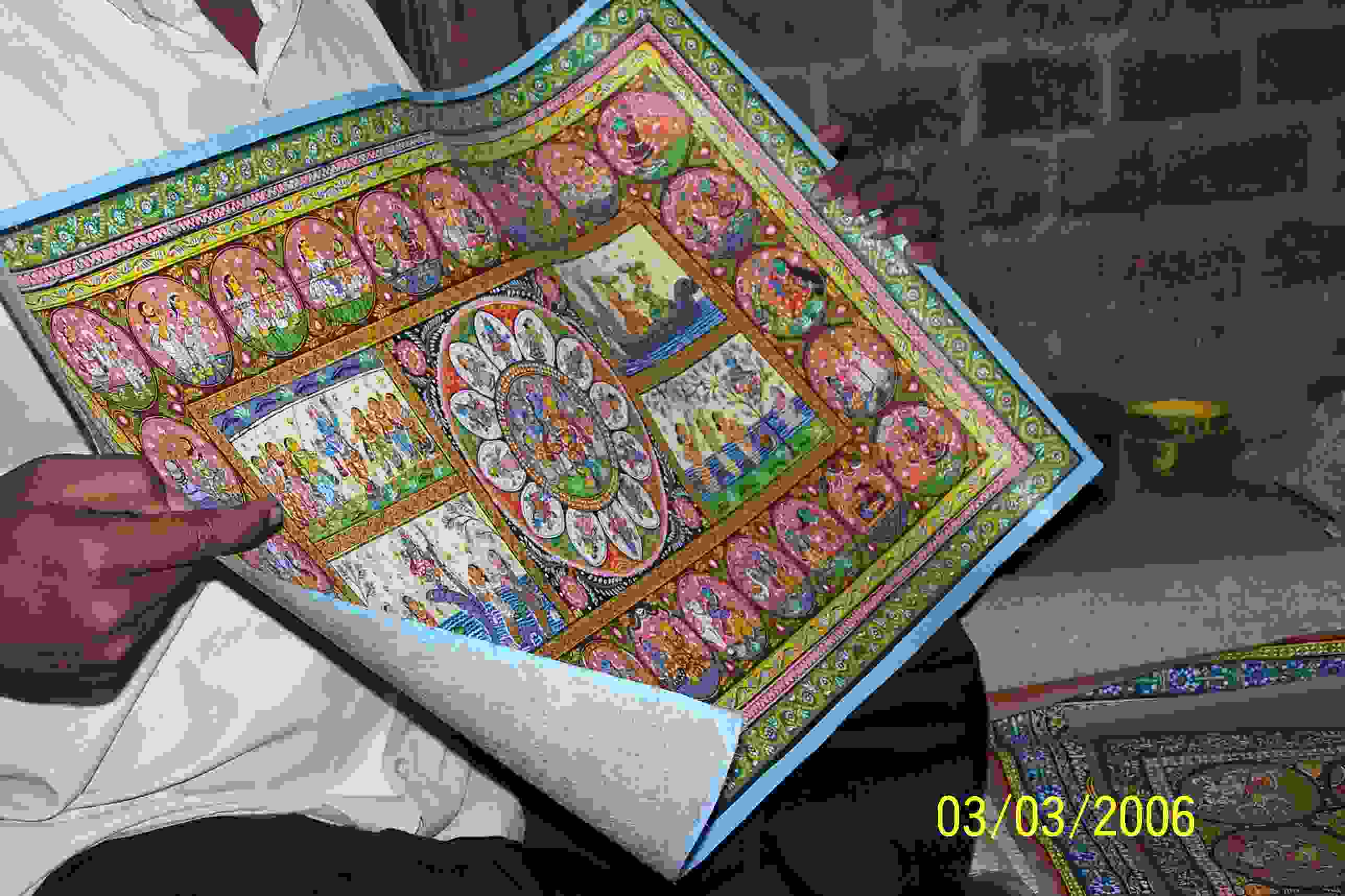Contribute
| South Asian Art History - In Memory Of Prashant H. Fadia |
Sarojini Nayak
12/05/2007
PATTACHITRAS – MYTHOLOGY ON CANVAS
By Sarojini Nayak
Among the many fascinating rituals of the famed
Jagannath temple in Puri is the fortnight before the
Car festivals when the deities are said to be confined
to the sick room. During this period, the colossal
wooden images are hidden from public view and three
paintings of the deities are worshipped in place of
the statues. Painted by special temple artists,
locally known as chitrakars, these paintings are
painted afresh every year and discarded after use.
These paintings are known as “chitrapatisâ€, a short
form of the word “pattachitra†which essentially means
‘painting on a cloth’, (pata meaning cloth and chitra
meaning a drawing).
The origin of the pattachitra painting of Orissa is
deeply rooted in the Jagannath cult and widely
practiced in the temple town of Puri and its vicinity.
Basically a kind of miniature paintings, the themes
are purely mythological, though gradually modern
themes are finding place. Finely executed on cloth,
the paintings of the deities were treasured souvenirs
carried by pilgrims in the olden days. Today, this
passion has extended to art lovers, museum owners and
ordinary folks who want to beautify their homes with
traditional art.
The artisans’ village of Raghurajpur near Puri is the
focal point for patachittra paintings – both for sale
and for those wishing to learn the art. There are
several teachers who continue to teach the art in the
old gurukul tradition, in the sense that the pupil
lives with the teacher and learns the art. A time
consuming process, the artist here not only learns the
intricate process of making a canvas but also prepares
the brushes and paints. Totally indigenous in nature,
the traditional paints are made to last several
centuries
The colours are natural, made from naturally occurring
minerals and pigments with plant gum binders. While
red (Hingula) is derived from cinnabar found in the
form of a stone, red ochre (geru) is derived from geru
stone which is finely grounded, mixed with water and
allowed to settle. The water along with the pigment
is boiled until a thick paste is formed. Orpiment,
occurring in stone form is the source for yellow
colour. Black is collected from a wick lamp – the soot
collected is mixed with glue. White is sourced from
conch shells and blue is obtained from indigo.
Making the colours is time consuming and it is the
women folk who are entrusted with this task. The
binders are again strictly natural, from plant gum
such as extracts from neem, wood apple, elephant
apple, etc. Traditional brushes are made from the hair
of goat, calf, buffalo and rat or squirrel.
Sometimes, root and sticks are also used. However, the
availability of machine made brushes has eased the
work of chitrakaras and some artists have moved to
using chemical paints.
Being a hereditary art, the pattachitra themes are
often passed from one generation to other with books
of sketches carefully preserved by families. Regarded
as valuable possessions, these books are placed in the
family alter and worshipped. Closely associated with
Jagannath cult, it is not surprising that themes
relating to Lord Jagannath find prominence among
pattachitra painters. The Thiabadia painting is a
vertical painting depicting a plan of the Jagannath
temple with details of shrines surrounding the main
temple, the deities and depiction of the festivities
connected with the temple. Story paintings are
another popular form of painting. In this type, the
entire story is presented through compartments. The
main requisite here is that the paintings are in a
sequence so as to enable the viewer to read the story.
Another form of story painting is to have the main
theme in the center and the sequence painted in
segments that encircle the main theme. Mythological
stories like that of Narasimha, Krishna and Ganesh
janma are often presented in this manner. Another
distinguishing character is that the borders of the
paintings are very detailed and paintings without
borders are considered incomplete.
For many years, the paintings were executed only by
men while women were entrusted with the preparation of
paints and canvas. However, the last two decades has
seen the emergence of several women artists, and
pattachitra is no longer confined to canvas, but used
as a decoration on tassar sarees, shawls, furniture
etc. Another recent development is the trend of
painting directly on the walls. In fact, as a pioneer
project, the walls of the artisans village of
Raghurajpur, which is incidentally a model rural
tourism destination, has been adorned with wall
murals, all in the pattachitra tradition.
end
You may also access this article through our web-site http://www.lokvani.com/

